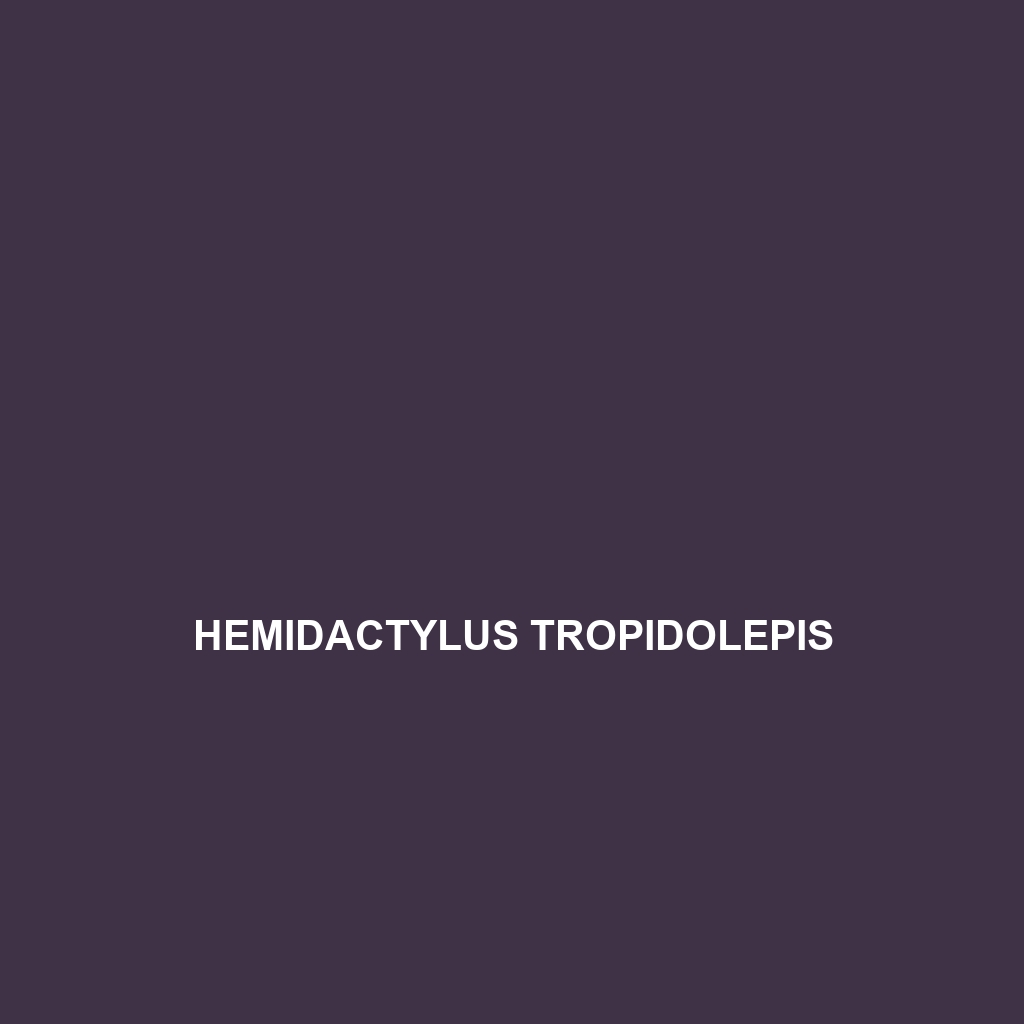Common Name
Hemidactylus triedrus
Scientific Name
Hemidactylus triedrus
Habitat
Hemidactylus triedrus, commonly known as the tropical house gecko, is primarily found across a range of geographic regions. This species thrives predominantly in tropical and subtropical climates, often residing in habitats such as rainforests, savannas, and near marine environments. These geckos are adept at living in human-constructed structures, frequently being spotted in urban settings where they find ample coverage and warmth. They prefer well-vegetated areas that provide sufficient hiding spots, as well as places near light sources where insects congregate. Their adaptability allows them to coexist in temperate forests and even arid regions when adequate shelter is available.
Physical Characteristics
Hemidactylus triedrus exhibits distinct physical characteristics that make it easily identifiable. Adult geckos can measure between 10 to 20 cm (approximately 4 to 8 inches) in length. They possess a flat, elongated body with a broad head and large, lidless eyes that enhance their vision in low-light conditions. The skin is usually rough-textured with a pattern of light and dark bands or blotches, often in shades of gray, brown, or sandy hues, which provide excellent camouflage against predators. A notable feature is their adhesive toe pads, which enable them to climb smooth surfaces effortlessly. This adaptability is crucial for their survival in diverse environments, from rainforests to urban areas.
Behavior
The behavior of Hemidactylus triedrus is particularly fascinating, as these geckos are primarily nocturnal. They exhibit active foraging patterns, scouring their surroundings for food during the night. These geckos communicate through a series of clicks and chirps, especially during mating rituals or territorial disputes. Social interactions are common among males, which can lead to competitive displays. Notably, they have a remarkable ability to escape predators by shedding their tail, a defense mechanism that allows them to evade capture and later regenerate the lost tail. Their nocturnal nature and unique behaviors make them an interesting subject for both researchers and enthusiast observers.
Diet
Hemidactylus triedrus is classified as an insectivore, primarily feeding on a varied diet of insects such as crickets, moths, and beetles. They are opportunistic feeders, using their keen vision to spot prey at night. Occasionally, they may consume larger food items, including smaller reptiles or even plant material, although this is less common. Their dietary habits highlight their role in controlling insect populations, which is an essential ecological service in both natural and urban environments.
Reproduction
The reproductive cycle of Hemidactylus triedrus is characterized by a clear seasonal pattern, with mating typically occurring during warm months when food is abundant. Females lay clutches of two soft-shelled eggs, usually locating them in sheltered areas to ensure their safety until hatching. The gestation period lasts around 6 to 8 weeks. Once hatched, the juvenile geckos are independent and able to forage for food immediately, showing a rapid growth rate that allows them to reach maturity within a few months. Parental care is minimal, as the tiny geckos must rely on their instincts and inherited survival skills from birth.
Conservation Status
According to the International Union for Conservation of Nature (IUCN), Hemidactylus triedrus is currently listed as of ‘Least Concern’. This designation reflects their widespread distribution and adaptability to various habitats, including urban environments. However, habitat loss due to deforestation and urban development poses potential threats to local populations. Conservation efforts focus on maintaining healthy ecosystems and minimizing habitat destruction to ensure the continued survival of this species.
Interesting Facts
One of the most intriguing aspects of Hemidactylus triedrus is its ability to regenerate its tail, which not only aids in evading predators but also serves important biological functions. The regenerated tail is often shorter and may differ in color and texture from the original. Additionally, these geckos have a unique adaptation allowing them to thrive in human-dominated environments, often found in homes and buildings, where they help control pest populations. Their beneficial presence in urban areas makes them a valuable ally for natural pest management.
Role in Ecosystem
Hemidactylus triedrus plays a critical role in its ecosystem as a natural pest controller. By feeding on various insects, these geckos contribute to regulating insect populations, which helps maintain ecological balance. Their interactions with other species, including predators and prey, position them as integral components of their habitat’s food web. Furthermore, their presence indicates a healthy environment, making them valuable indicators of ecological health. As both prey and predator, they reinforce the intricate relationships sustaining their ecosystems.
